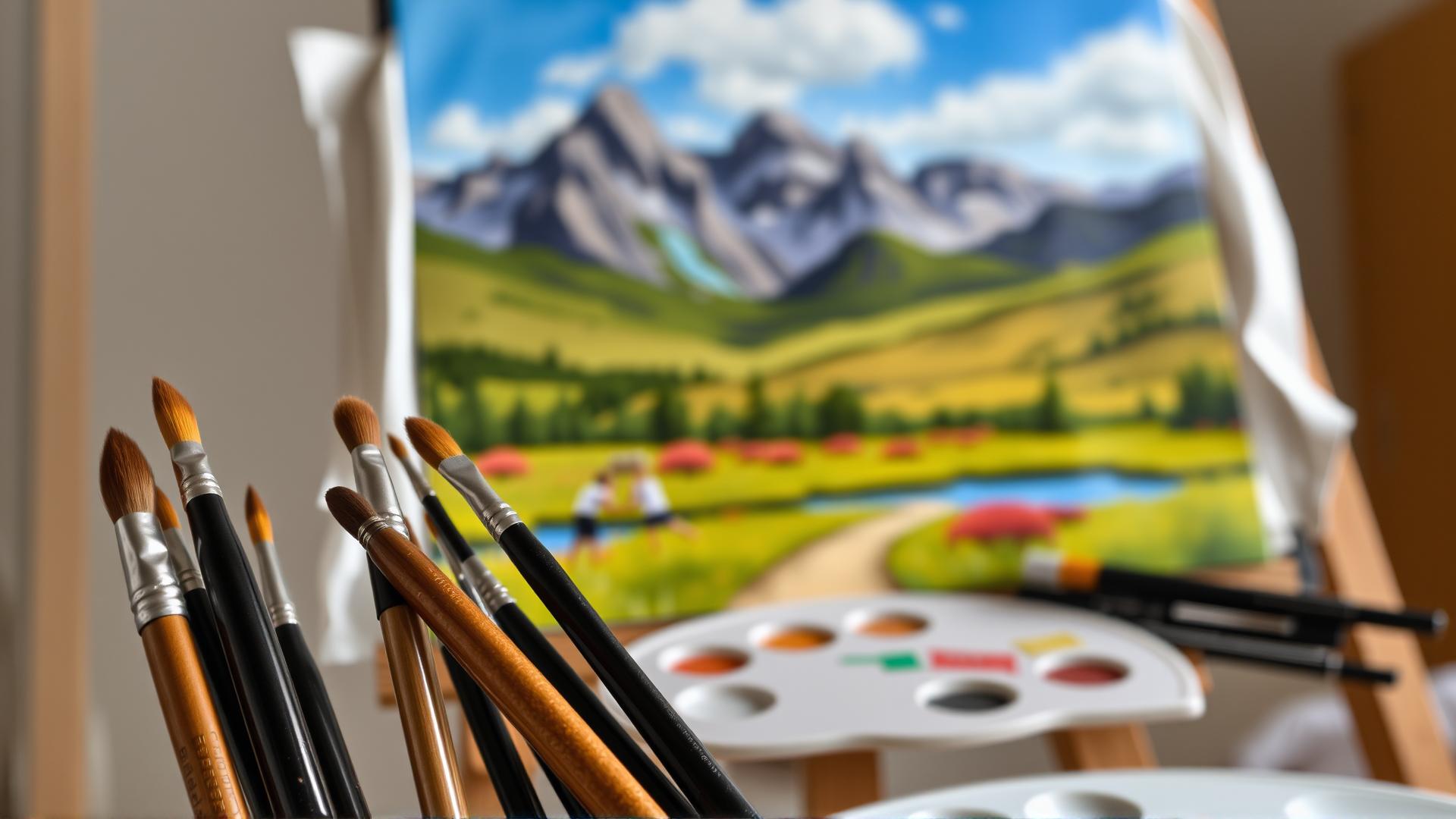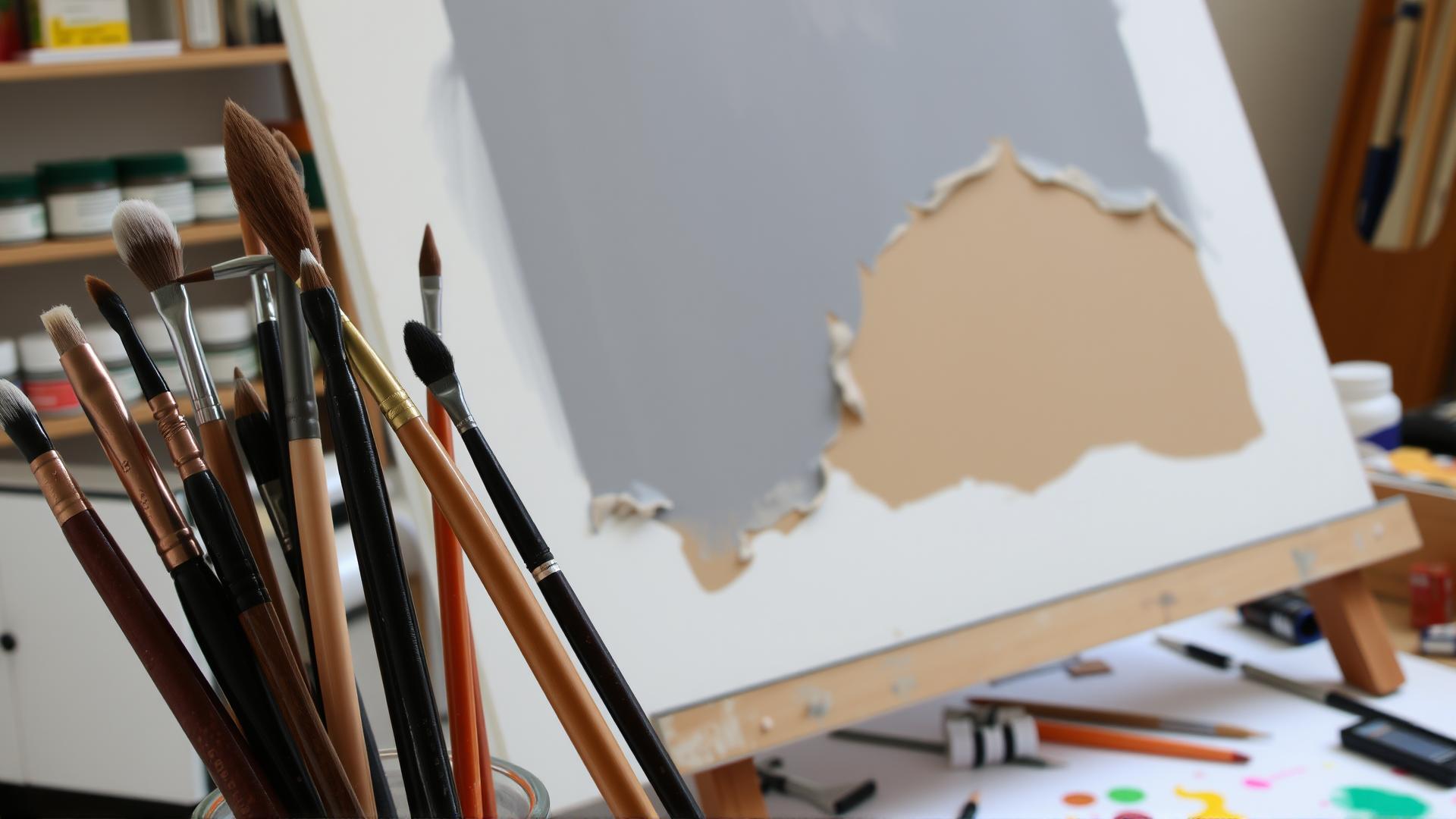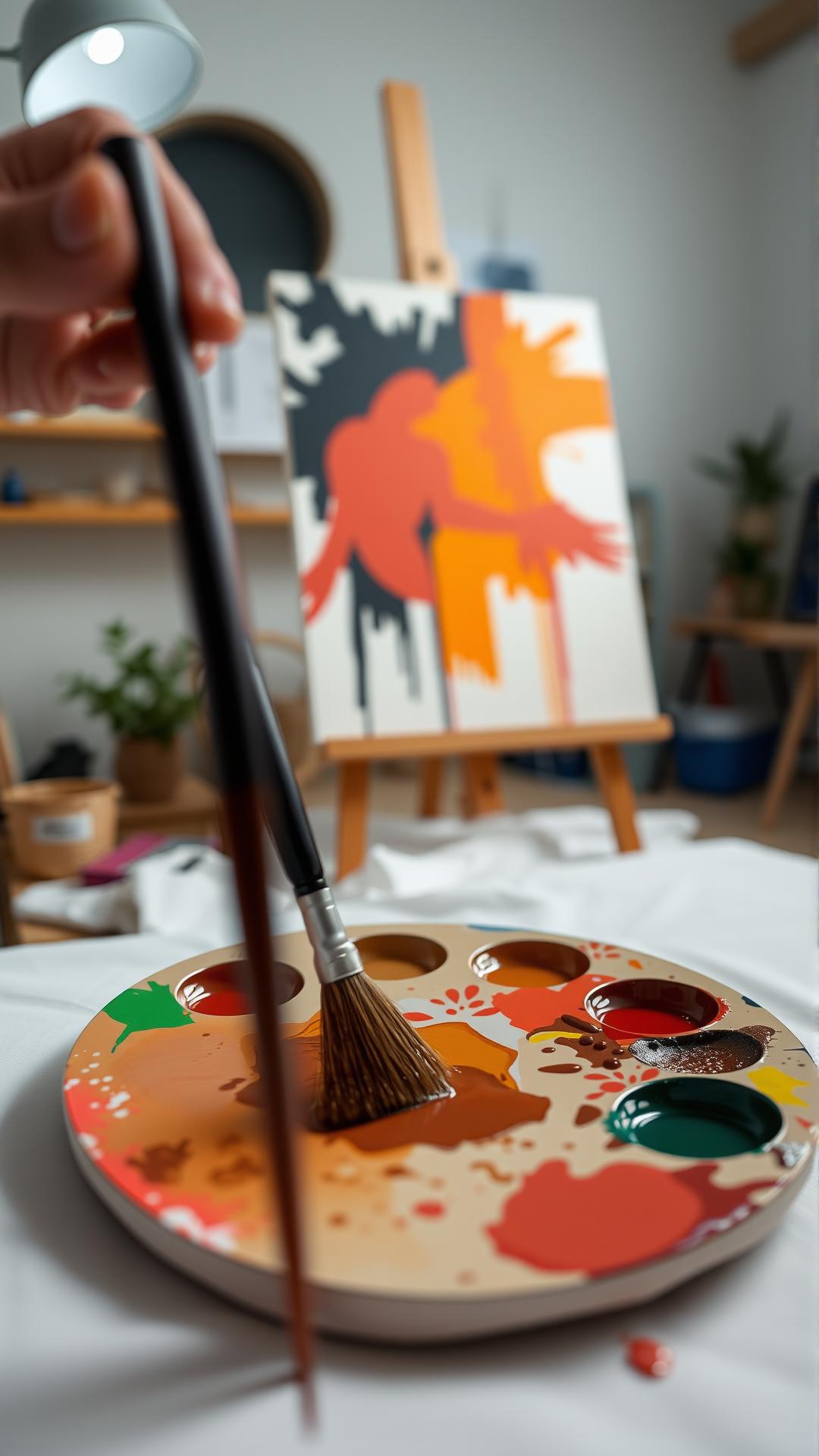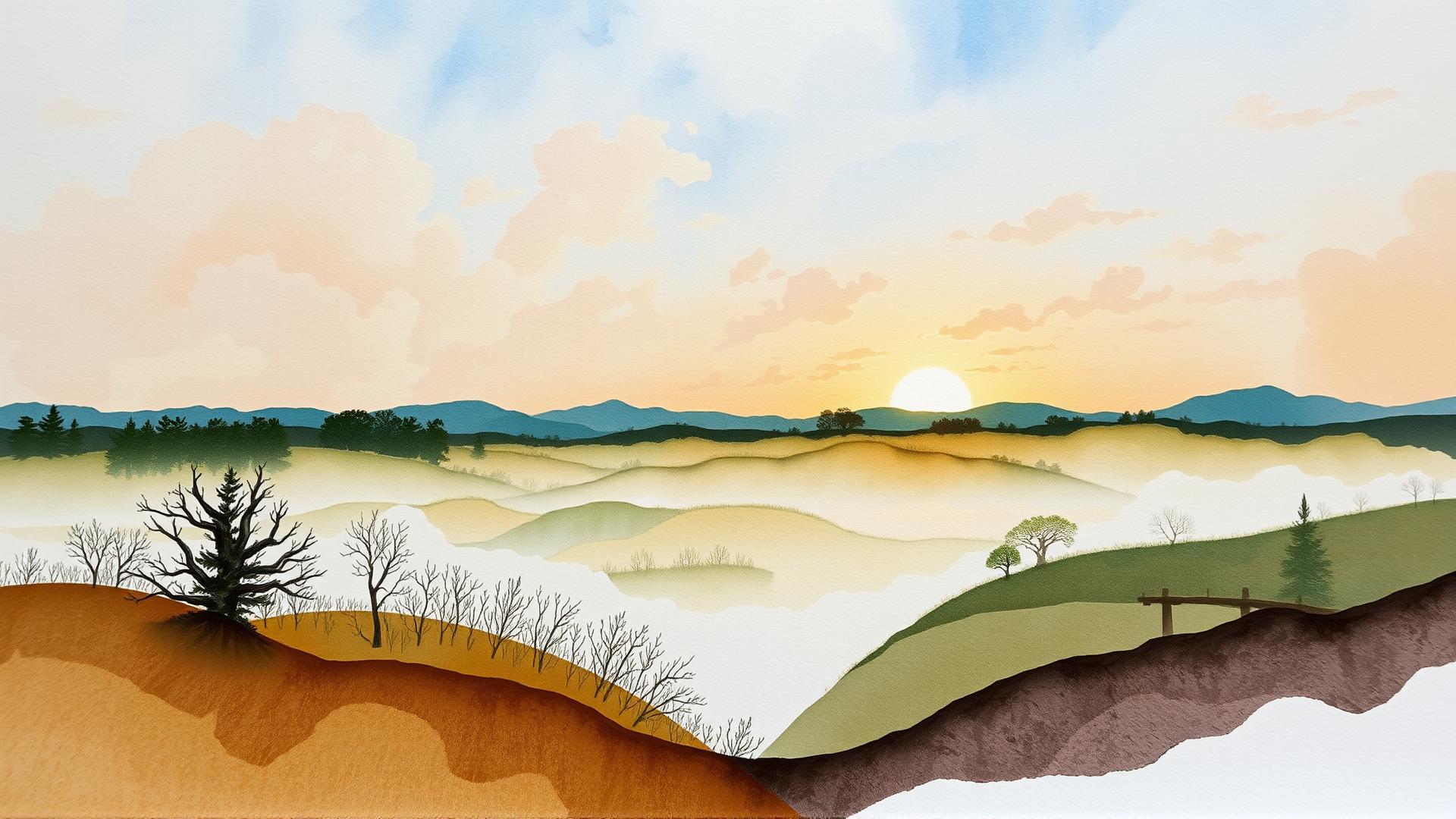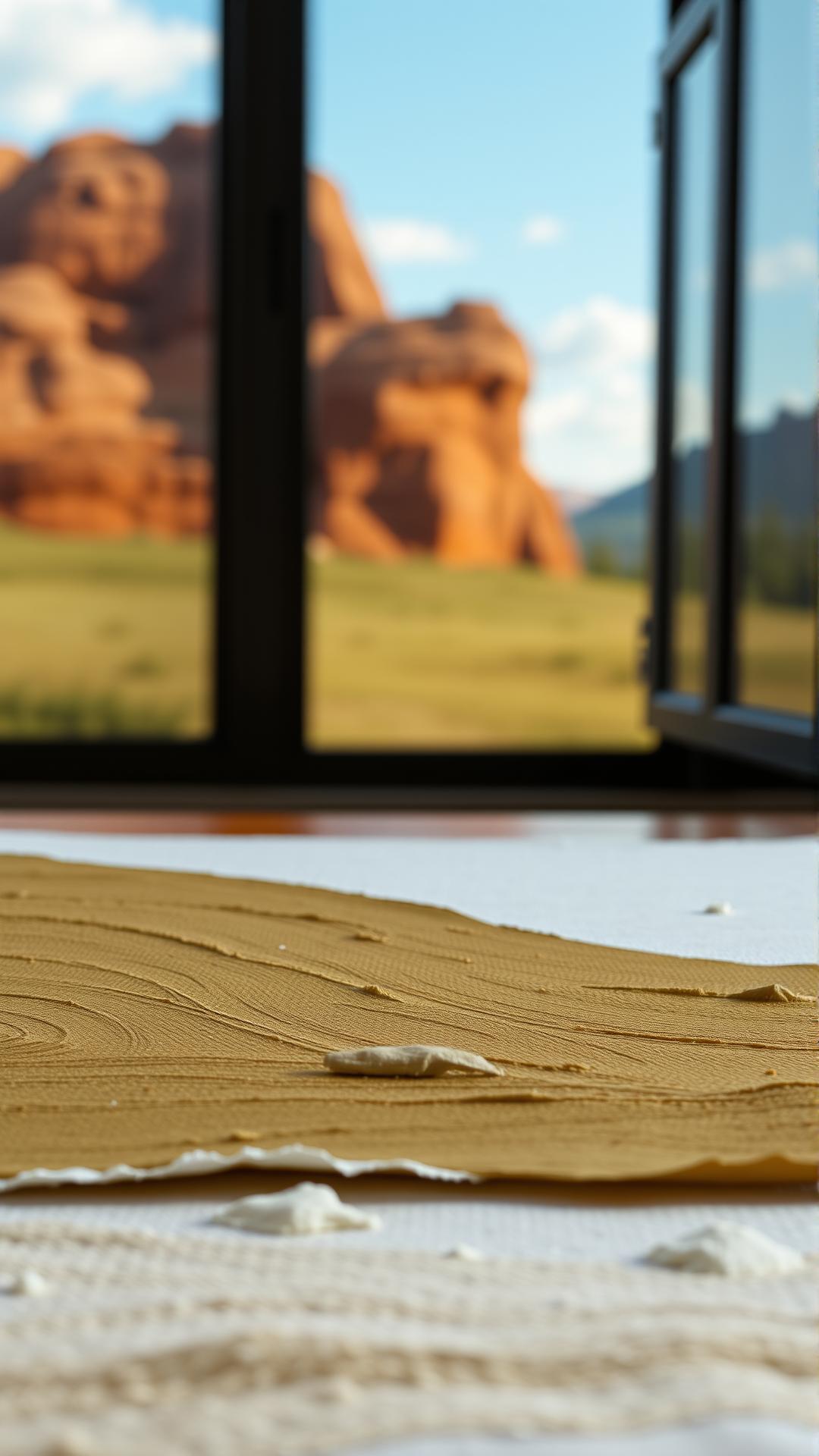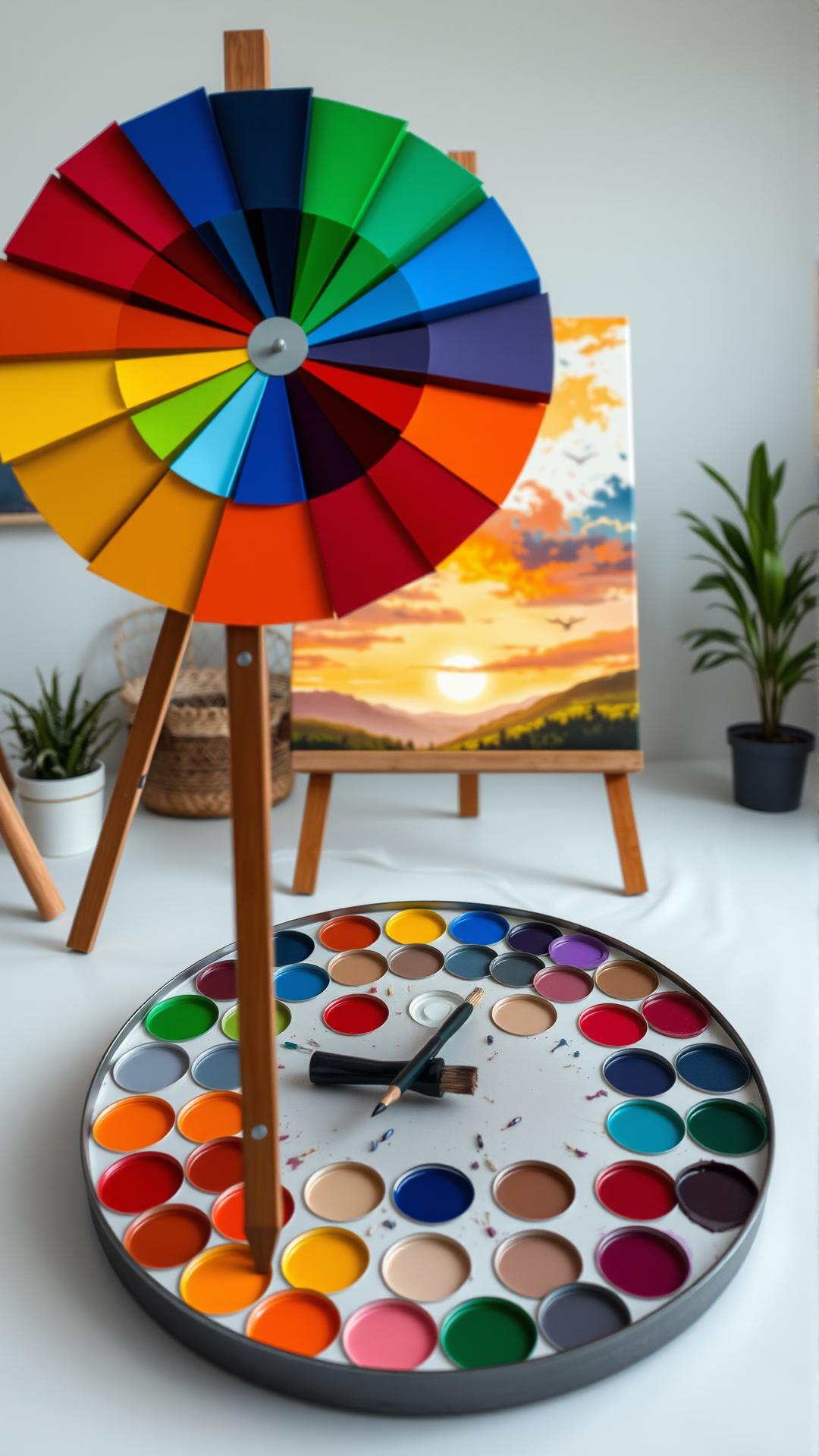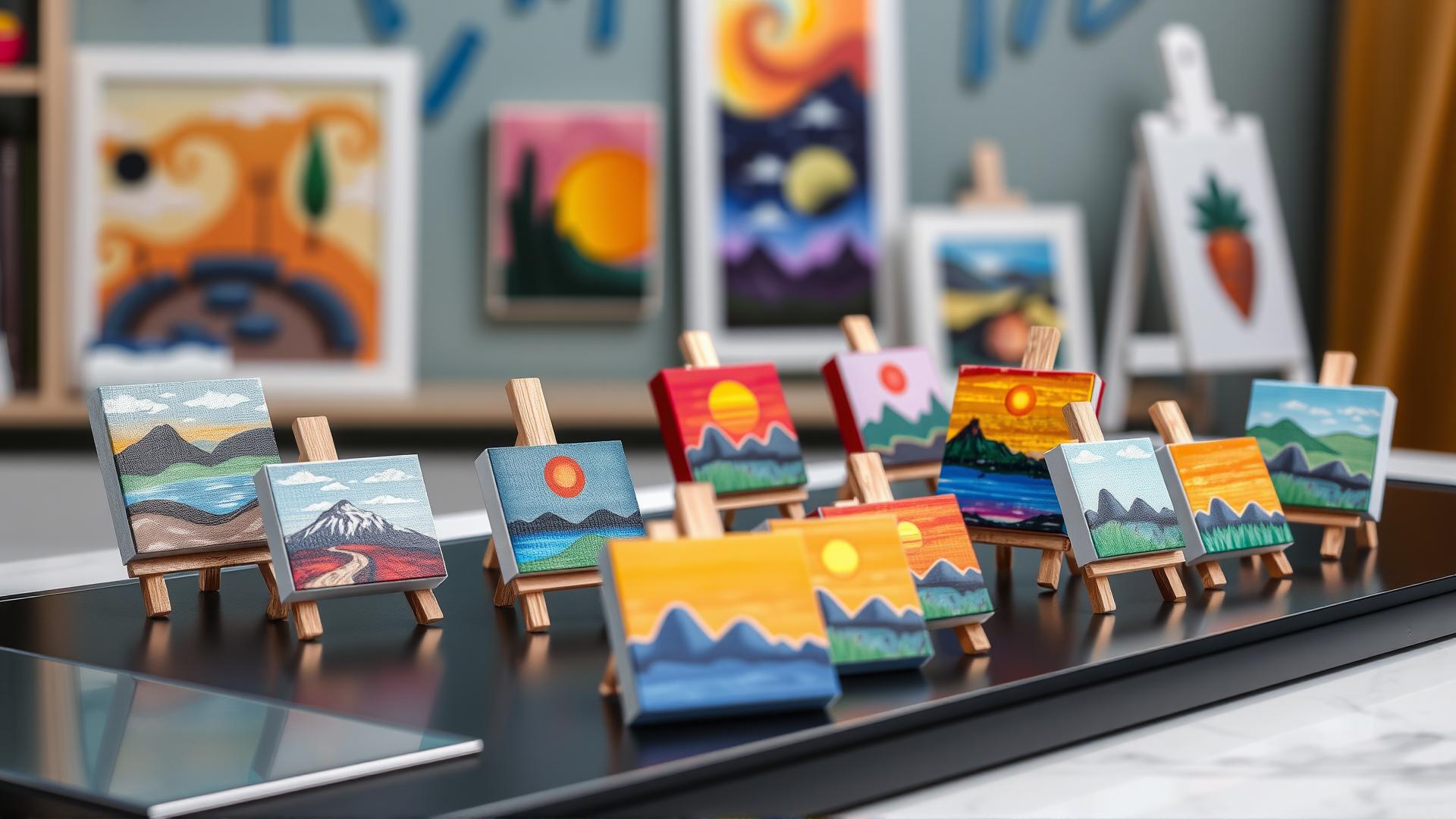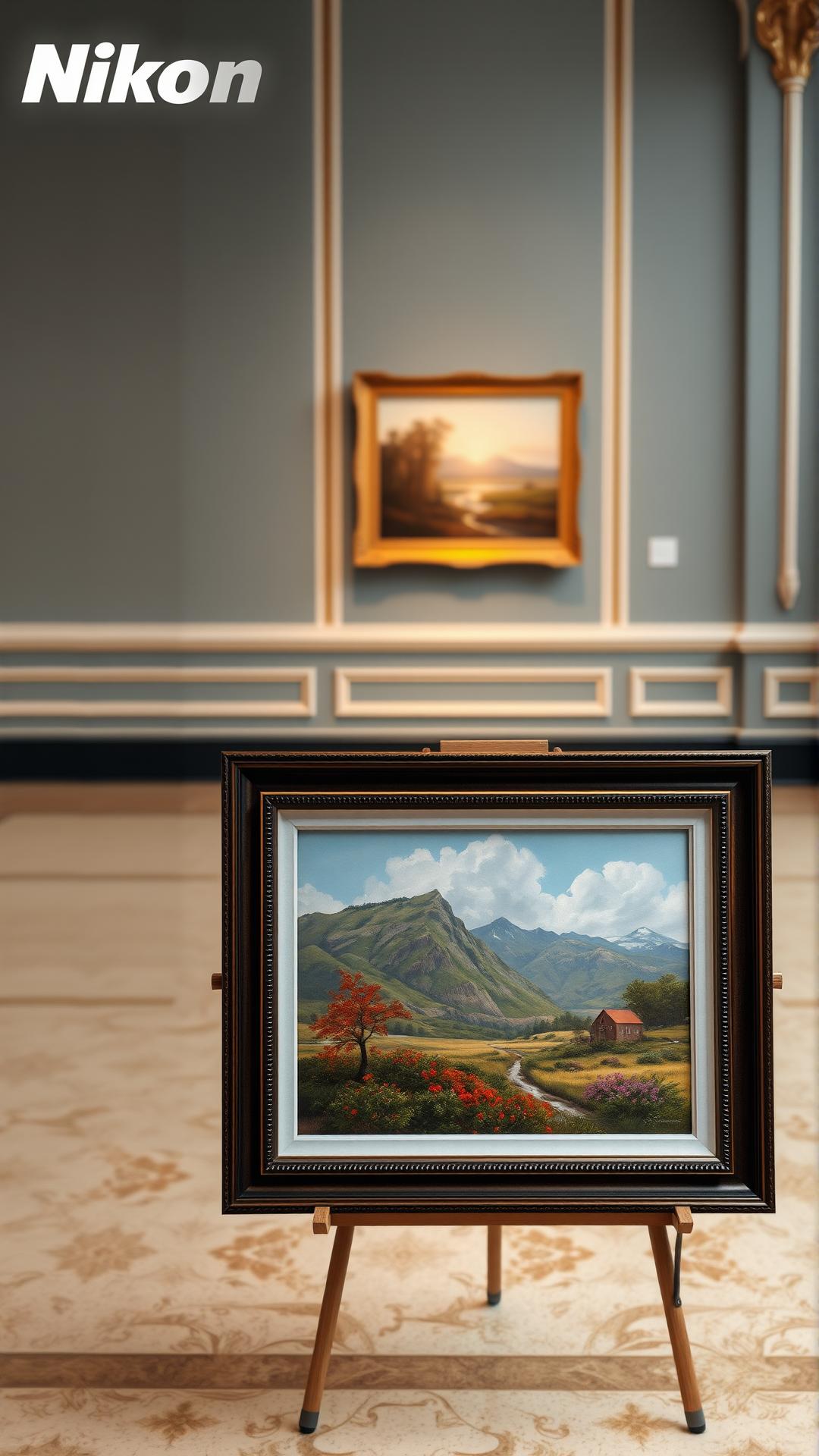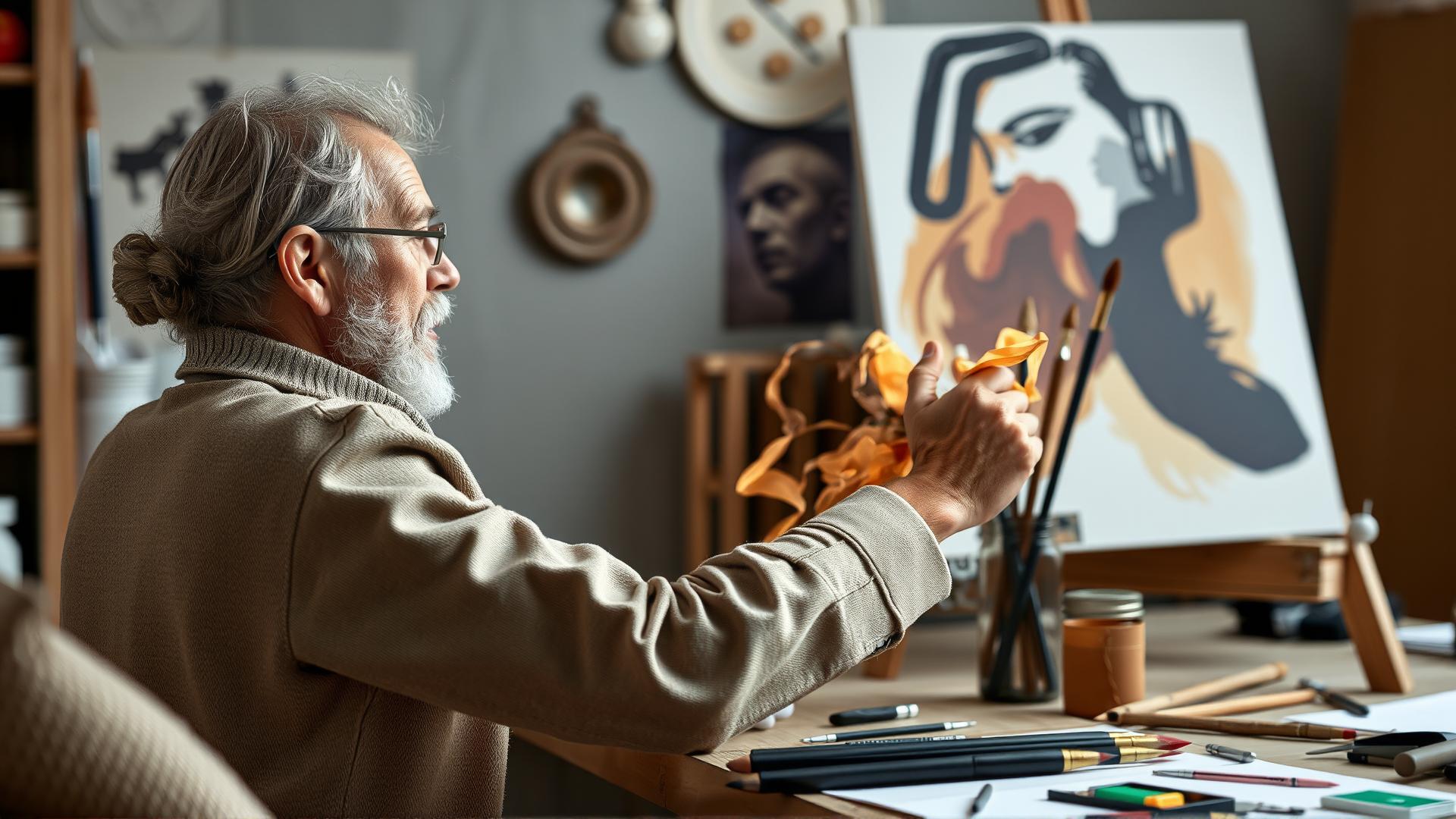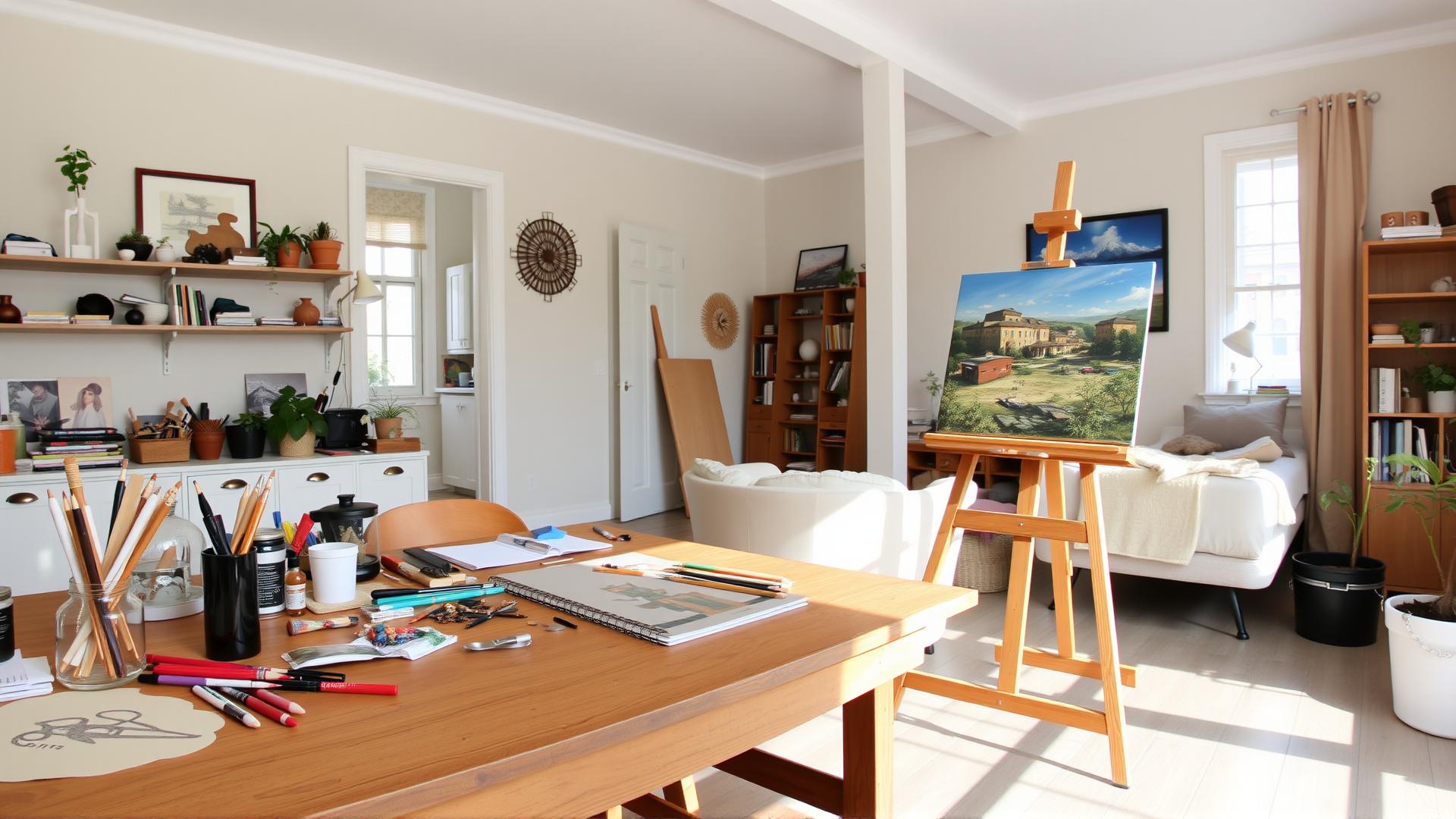Introduction
Landscape paintings in acrylic are more than simple representations of nature; they are vibrant expressions of emotion and interpretation. Utilizing acrylic techniques enables artists to capture the essence of a landscape, whether it’s a serene beach or a majestic mountain range. Acrylic paint’s versatility and fast drying time offer endless possibilities for creating depth and texture, transforming a blank canvas into a vivid scene. As we explore various techniques, both novice and experienced artists will find inspiration to express their vision and creativity on the canvas.
This article will guide you through the essential techniques for mastering landscape paintings with acrylics. We will delve into the history of landscape art, explore the characteristics of acrylic paint, and discuss advanced painting methods. By understanding the interplay between color, composition, and technique, you can elevate your artwork and captivate your audience with stunning landscapes that evoke feelings of tranquility and awe.
The History of Landscape Painting Explore the Rich History of Landscape Painting
Origins and Ancient Cultures
Landscape painting, as a dedicated genre, has roots that can be traced back to ancient civilizations, where artists captured nature’s majesty on cave walls and pottery. The Greeks and Romans adorned their spaces with depictions of idyllic vistas, blending mythology with the natural world. These early portrayals often served practical purposes, aimed at depicting sacred spaces or showcasing land ownership.
The Renaissance and Baroque Periods
The Renaissance ignited a transformative wave in landscape painting, emphasizing realism, perspective, and human emotion. Artists like Leonardo da Vinci incorporated extensive backgrounds in their portraits, subtly transitioning to more elaborate landscape scenes. The Baroque period continued this evolution, with painters such as Claude Lorrain and Jacob van Ruisdael utilizing dramatic lighting and composition to evoke emotion and movement in their works.
Romanticism: The Nature of Emotion
The Romantic era of the late 18th and early 19th centuries marked a pivotal shift in landscape painting, emphasizing the sublime elements of nature. Artists like Caspar David Friedrich championed the portrayal of landscapes infused with introspective themes, using nature as a mirror for human experience. His work often conveys a deep emotional resonance, inviting viewers to connect with the essence of the natural world.
Impressionism: Capturing Light and Movement
The Impressionist movement introduced a new perspective on landscape art, prioritizing the transient effects of light and color. Claude Monet led the way with his innovative techniques, such as broken brush strokes and vibrant palettes. His series of landscapes, especially those depicting water lilies and the Rouen Cathedral, transformed the relationship between the viewer and the painted world, encouraging a focus on perception rather than realism.
Modern Landscape Arts
As art continued to evolve through the 20th century and beyond, landscape painting expanded to incorporate modernist concepts. Artists such as Georgia O’Keeffe and Edvard Munch explored abstraction, using landscapes as a vehicle for self-expression rather than strict representation. This evolution showcases the versatility and enduring appeal of landscape art, ensuring its place within the broader context of artistic exploration throughout history.
Understanding Acrylic Paint The Preferred Choice for Landscape Artists
Properties and Characteristics of Acrylic Paint
Acrylic paint is a versatile medium that has gained immense popularity among landscape artists due to its unique properties. One of the primary features that sets acrylics apart is their fast-drying capabilities. This allows artists to work quickly and layer colors without long waiting periods. The ranges of viscosity in acrylics can also accommodate different techniques, such as thick impasto or smooth glazing, depending on the desired effect. The paint dries to a water-resistant finish, ensuring longevity and durability for outdoor-themed artworks.
Another significant attribute of acrylic paints is their vibrant color retention. Unlike oils, which can sometimes dull as they dry, acrylics maintain a higher level of brightness, making them ideal for the lush colors found in landscapes. Their ability to blend well when wet enables artists to create smooth transitions in sky gradients or subtle shifts in foliage hues.
Advantages and Disadvantages of Acrylics
The advantages of using acrylic paints are plentiful. They are generally non-toxic and water-based, making them safer for both artists and the environment compared to traditional oil paints. Easy cleanup with soap and water is another appealing factor, particularly for those who may be working in shared or limited spaces. The versatility of acrylics allows for experimentation with different techniques, from traditional brushwork to pouring, which can lead to unique landscape interpretations.
There are some disadvantages to consider. The rapid drying time might be a double-edged sword; while it allows for quick layers, it can also present challenges for artists who prefer a slower blending process typical with oils. Acrylics can also dry several shades darker than they appear when wet, which may require adjustments and careful planning for color mixing.
Essential Tools and Materials
To maximize the potential of acrylic landscape paintings, having the right tools and materials is crucial. Essential items include:
- High-quality acrylic paints, where pigment concentration can make a significant difference in vibrancy.
- A variety of brushes, including flat, round, and filbert shapes to achieve different textures.
- A palette or palette knife for mixing colors.
- Canvas, acrylic paper, or wood panels, suitable for acrylic applications.
- Water containers for cleaning brushes and thinning paint.
- Acrylic mediums, like retarder or glazing medium, which can enhance the paint’s properties.
Equipping oneself with these materials will create a strong foundation for exploring and mastering acrylic landscape techniques in the chapters to follow.
Essential Acrylic Techniques for Landscapes Mastering Vibrant Applications
Fundamental Techniques for Captivating Landscape Art
Creating beautiful landscape paintings in acrylic requires a firm grasp of essential techniques that enhance both vibrancy and depth. By mastering methods such as glazing, layering, and wet-on-wet, artists can unlock a range of visual possibilities that breathe life into their artwork. Each technique has its unique merits and applications, facilitating stunning representations of nature’s beauty.
Glazing is a technique that involves applying thin, transparent layers of paint over a dried base layer. This method allows for the creation of luminous colors and subtle shifts in tone. To achieve this, mix acrylic paint with a glazing medium to reduce its opacity. Start with a dry underpainting; then gently brush on the glaze, ensuring it is even and smooth. This technique is particularly effective for landscapes as it helps build depth, creates atmospheric effects, and enhances the interplay of light in your painting. By layering multiple glazes, artists can develop rich, intricate hues that mimic the complexity of natural scenes.
Layering is another invaluable approach. It goes beyond glazing by incorporating thicker applications of paint, which can create both texture and dimension. Begin with a solid foundation that outlines key elements in the landscape, such as the sky and foreground. Once the initial layer is dry, progressively add layers that define shapes, highlights, and shadows. Using a combination of brushes can help create various textures in the landscape. This method allows the artist to create a more dynamic and vivid representation, complementing the natural gradients seen in real-life landscapes.
The wet-on-wet technique is perfect for those who enjoy spontaneity in their artwork. As the name suggests, this method involves applying wet paint on top of wet paint. This creates smooth blends and unique effects, especially for skies and water reflections. An ideal way to implement wet-on-wet is to work quickly but intentionally, ensuring that colors merge harmoniously. It is critical to maintain a balanced approach so that the painting does not turn into an indistinguishable mix.
By integrating these fundamental acrylic techniques, artists can elevate their landscape paintings, allowing for genuine expression and enhanced visual storytelling. With practice, these methods can lead to stunning results, showcasing one’s unique artistic voice through vibrant representations of the natural world.
Creating Texture in Landscape Paintings Mastering Acrylic Techniques
Add Dimension with Various Texture Methods
Texture plays a crucial role in acrylic landscape paintings, infusing life and depth into your artwork. Unlike traditional oils, acrylics allow for rapid drying, which facilitates experimentation with various techniques aimed at enhancing the tactile quality of your landscapes. Utilizing tools and mediums can transform a flat composition into a richly detailed scene.
One of the most effective methods for creating texture is the use of a palette knife. This tool is not only ideal for mixing paints but also for applying thick layers of paint to produce a three-dimensional effect. By loading the knife with a generous amount of acrylic paint, artists can create bold strokes and peaks that mimic the rugged beauty of natural landscapes. Implementing this technique across horizons or grassy fields can evoke the sensation of wind blowing through the elements.
Another versatile tool to consider for textural enhancements is the sponge. Sponges can add soft, uneven textures that suggest the subtleties of foliage, clouds, or water reflections. When applied with a dabbing motion, a sponge can create organic shapes and gradients that are difficult to achieve with brushes. Try using a damp sponge to layer various shades of greens and browns on trees or grass, allowing the colors to blend naturally and organically.
For those interested in more daring textures, the impasto technique is worth mastering. Impasto involves applying the paint in thick layers, where brush strokes and other tools are used intentionally to create a visual feast. This can be particularly striking in rocky landscapes or vibrant sunsets, where the raised paint captures light and casts intriguing shadows. Using a palette knife to apply impasto allows fine control over every stroke, resulting in a rugged texture that draws the viewer’s eye.
To further enhance the dimensionality of your landscape, consider incorporating mixed media elements. Items such as sand, sawdust, or crushed stone mixed with acrylic medium can offer natural textures that mimic the earth or gravel paths. Experimenting with these additional materials can lead to unique visual experiences that celebrate the raw beauty of the landscape you are portraying.
Color Theory for Landscape Painting Unlocking the Psychology of Color
Understanding Color Theory and Its Role in Landscape Art
Color theory is a crucial aspect of creating compelling landscape paintings, particularly when using acrylics. It involves understanding how colors interact with each other and how they can affect the viewer’s mood and perception. Each hue evokes different emotional responses, for example, blues might instill a sense of calm, while reds can evoke warmth or urgency. By mastering these principles, artists can harness the full potential of color to create landscapes that are not only visually appealing but also emotionally resonant.
In landscape painting, the choice of color palette is vital. It can determine the atmosphere and focus of your artwork. A well-chosen palette draws the viewer’s eye and helps convey the essence of the scene being depicted. Artists often categorize colors into three basic types: primary, secondary, and tertiary colors. Understanding how to mix these colors to achieve the desired shades can significantly enhance the depth and richness of your landscape.
Choosing a Color Palette to Enhance Mood and Perspective
When selecting a color palette for your landscape, it is essential to consider the overall mood you wish to portray. A cool color palette consisting of soft blues, greens, and greys may complement a misty morning landscape, while a vibrant palette with bold oranges, yellows, and reds may be perfect for depicting a sunset scene.
Here are some practical tips for choosing the right color palette:
- Limit Your Palette: Start with a limited color scheme (3-5 colors) to create harmony within your painting. This will prevent visual clutter and allow the colors to work together cohesively.
- Consider the Color Wheel: Use the color wheel to identify complementary colors that enhance each other. For example, pairing warm colors with cool colors can create dynamic contrast in your landscapes.
- Experiment with Values: Pay attention to the lightness or darkness of your colors. Adding white or black can create tints and shades that add depth and dimension to your artwork.
By thoughtfully applying these color theory principles, you can amplify the impact of your acrylic landscape paintings, guiding viewers through an immersive emotional journey. It sets the stage for the finishing touches, as the right colors can breathe life into the textures developed earlier, creating a cohesive and stunning piece of art.
Finalizing Your Landscape Masterpiece Tips on How to Finalize and Present Your Acrylic Landscape Paintings
The journey to creating a stunning acrylic landscape painting culminates in the final stages of varnishing, framing, and preparing your artwork for display or sale. Each of these steps not only enhances the visual impact of your painting but also ensures its longevity and protection against environmental factors. Understanding these procedures is key to mastering your landscape paintings and presenting them in the best light.
Varnishing: Protect and Enhance
Varnishing your acrylic landscape painting is essential for protecting it from dust, grime, and moisture. A quality varnish can also significantly enhance the color depth and vibrancy of your artworks. There are different types of varnishes available, including gloss, satin, and matte finishes.
To apply varnish, wait until your painting is fully dry, which may take up to several days depending on thickness. Use a soft brush to apply an even coat, avoiding excessive pressure that could disturb the surface. When applying, work in a well-ventilated area to prevent inhaling fumes. Once the first coat is dry, assess whether a second coat is necessary; this could further protect the artwork and enrich the finish.
Framing: The Art of Presentation
Choosing the right frame is integral to the overall presentation of your landscape painting. A well-selected frame can draw attention to the art, complement its colors, and enhance its aesthetic appeal. Many opt for a simple, modern frame to keep the focus on the painting, while others may prefer ornate frames that add a touch of elegance.
Before framing, ensure that the painting is completely dry and varnished. Use acid-free materials for backing to prevent any damage from moisture or chemicals. When it comes to hanging, remember to measure and align properly to keep the artwork visually balanced and impressive.
Preparing for Display or Sale
When finalizing your painting for display or sale, think about how you want it to be perceived. If you’re displaying your artwork in a gallery or home, choosing a location that complements the scene depicted will enhance its beauty. For sale, it’s essential to document the painting with high-quality photographs to showcase your work online or in a portfolio.
Be transparent about the materials used, including detailing any special techniques. Providing this context helps potential buyers understand the effort and skill required to create your landscape masterpiece. Whether you frame it or leave it unframed, ensure it is presented in a way that underscores your artistic vision and dedication.
Conclusions
Mastering landscape paintings with vibrant acrylic techniques requires both practice and an understanding of fundamental principles. By embracing the characteristics of acrylic paints, such as their quick drying time and versatility, artists can explore a wide array of styles and effects. Whether opting for a traditional approach or experimenting with contemporary methods, the journey of mastering landscape art is deeply rewarding.
As you continue to develop your acrylic landscape paintings, remember that each stroke is a step towards personal expression. The landscapes you create can reflect your unique perspective of the world, inviting others to connect with your vision. Take the techniques discussed in this article and let your creativity flow, resulting in breathtaking works of art that celebrate the beauty of nature.

